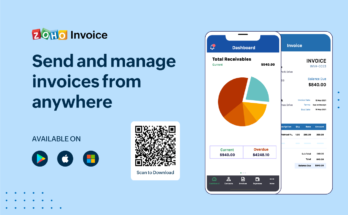You are reading Introduction to ChatGPT. It means you are curious about the advancements in natural language processing (NLP) and artificial intelligence (AI).
Have you heard about ChatGPT, the large language model developed by OpenAI? If you want to know more about ChatGPT and its potential applications, keep reading!
What is ChatGPT?
ChatGPT is a state-of-the-art language model developed by OpenAI, a leading AI research organization. It is a pre-trained language model that can generate text, translate languages, answer questions, and more. It was trained on a diverse range of internet text, allowing it to generate human-like text with high accuracy.
Applications of ChatGPT
ChatGPT has a wide range of applications in NLP and AI. Here are a few examples:
- Generating text: ChatGPT can be used to generate articles, stories, or poems with human-like writing style.
- Conversational AI: ChatGPT can be used to develop virtual assistants, chatbots, and other conversational interfaces that can understand and respond to natural language input.
- Language translation: ChatGPT can be used to translate languages, making it easier to communicate with people who speak different languages.
- Question-answering: ChatGPT can be used to answer questions and provide information, making it an ideal tool for creating knowledge-based systems.
How ChatGPT Works
ChatGPT is a language model developed by OpenAI that uses a deep learning technique called Transformer to generate human-like text. It’s trained on a massive amount of text data from the internet and books to learn the patterns and relationships between words and phrases.
Here’s how it works:
- Input: When a user inputs a text prompt, the model takes the input as the seed text to generate the response.
- Pre-processing: The input text is pre-processed by removing special characters, converting all characters to lowercase, etc.
- Encoding: The input text is then converted into numerical representations, called embeddings, which can be used by the model.
- Prediction: The model uses its pre-trained parameters to generate a probability distribution over the vocabulary for the next word in the sequence given the input text.
- Decoding: The model selects the most likely next word based on the probability distribution and adds it to the input text to form the response. This process is repeated multiple times to generate a complete response.
- Output: The final output is the generated text that is then returned to the user as the response.
ChatGPT is a language model by OpenAI using Transformer deep learning technique. It’s trained on vast text data to understand word and phrase relationships.
The input text is pre-processed, encoded, and used to generate a response through prediction and decoding.
The generated text is coherent and relevant to the input, making it useful for chatbots and Q&A systems.
The Advantages of ChatGPT
- High accuracy: ChatGPT has been trained on a large amount of text data, allowing it to generate text with high accuracy and coherence.
- Wide range of applications: As discussed earlier, ChatGPT has a wide range of applications in NLP and AI, making it a versatile tool for various industries.
- Easy to use: OpenAI provides easy-to-use API’s for developers to integrate ChatGPT into their applications.
Challenges of ChatGPT
- Bias: As ChatGPT was trained on internet text, it may contain biases and stereotypes that are present in the training data.
- Limited understanding of context: ChatGPT may have difficulty understanding the context of a conversation or text, leading to inappropriate or incorrect responses.
- Ethical concerns: As with any AI technology, there are ethical concerns about the use of ChatGPT, such as privacy and the potential for misuse.
Conclusion
ChatGPT is a powerful language model that has the potential to revolutionize the field of NLP and AI. However, it is important to be aware of the challenges and limitations of this technology, as well as the ethical considerations.
As AI continues to advance, it will be interesting to see how ChatGPT and other language models are used to improve our daily lives.
Are you interested in learning more about the potential applications of ChatGPT and how it can benefit your business or organization? Contact us today to learn how we can help you integrate this powerful technology into your operations.
References:
- OpenAI website (https://openai.com/)
- The Transformer architecture in NLP (https://jalammar.github.io/illustrated-transformer/)
- The Advantages and Challenges of Pre-Trained Language Models (https://towardsdatascience.com/the-advantages-and-challenges-of-pre-trained-language-models-682bceb97277)
- Chatbots and conversational AI: The future of customer service (https://venturebeat.com/2019/10/14/chatbots-and-conversational-ai-the-future-of-customer-service/)
- AI ethics: The impact of AI on society (https://emerj.com/ai-sector-insights/ai-ethics-the-impact-of-ai-on-society/)




Very informative